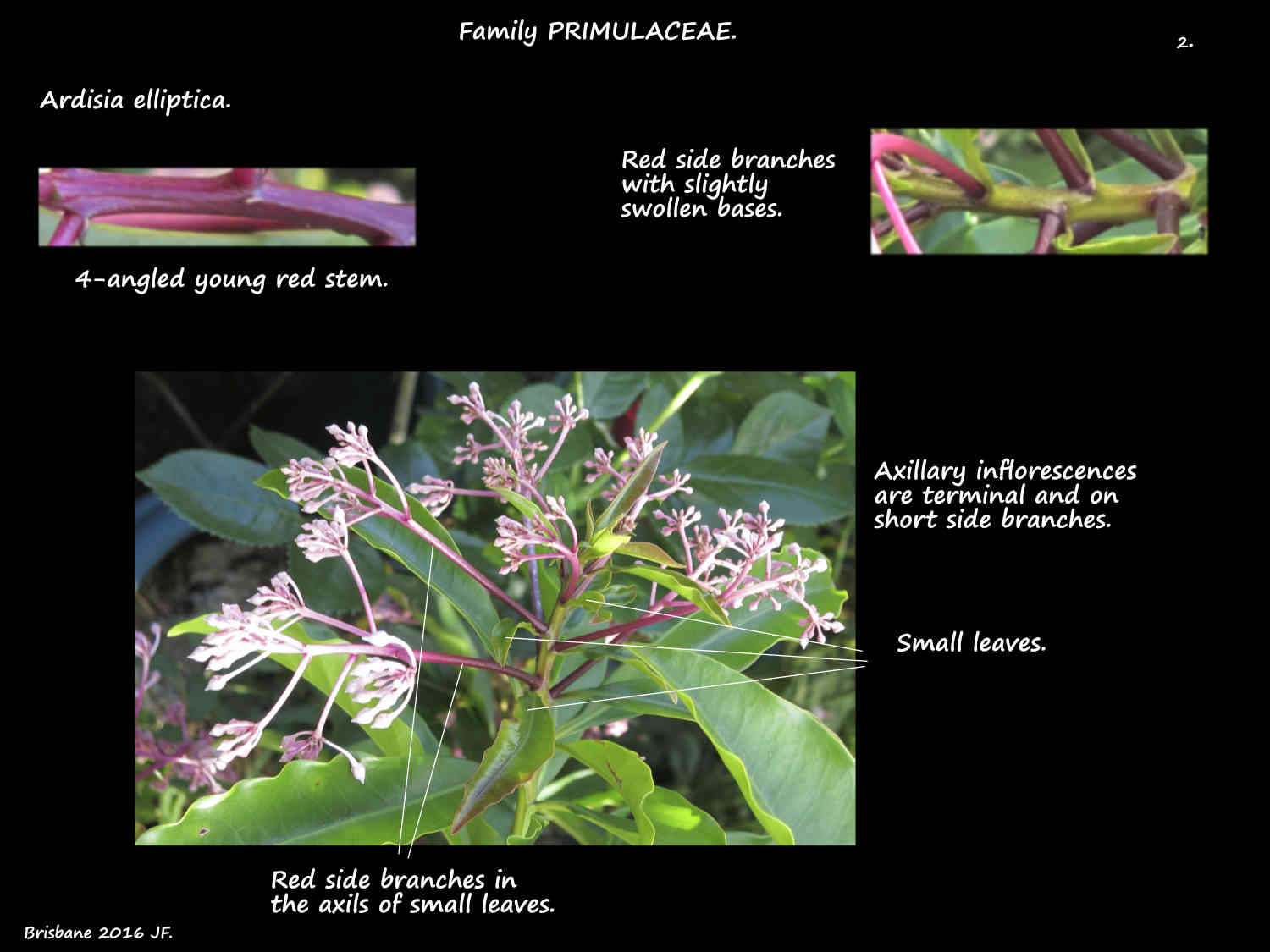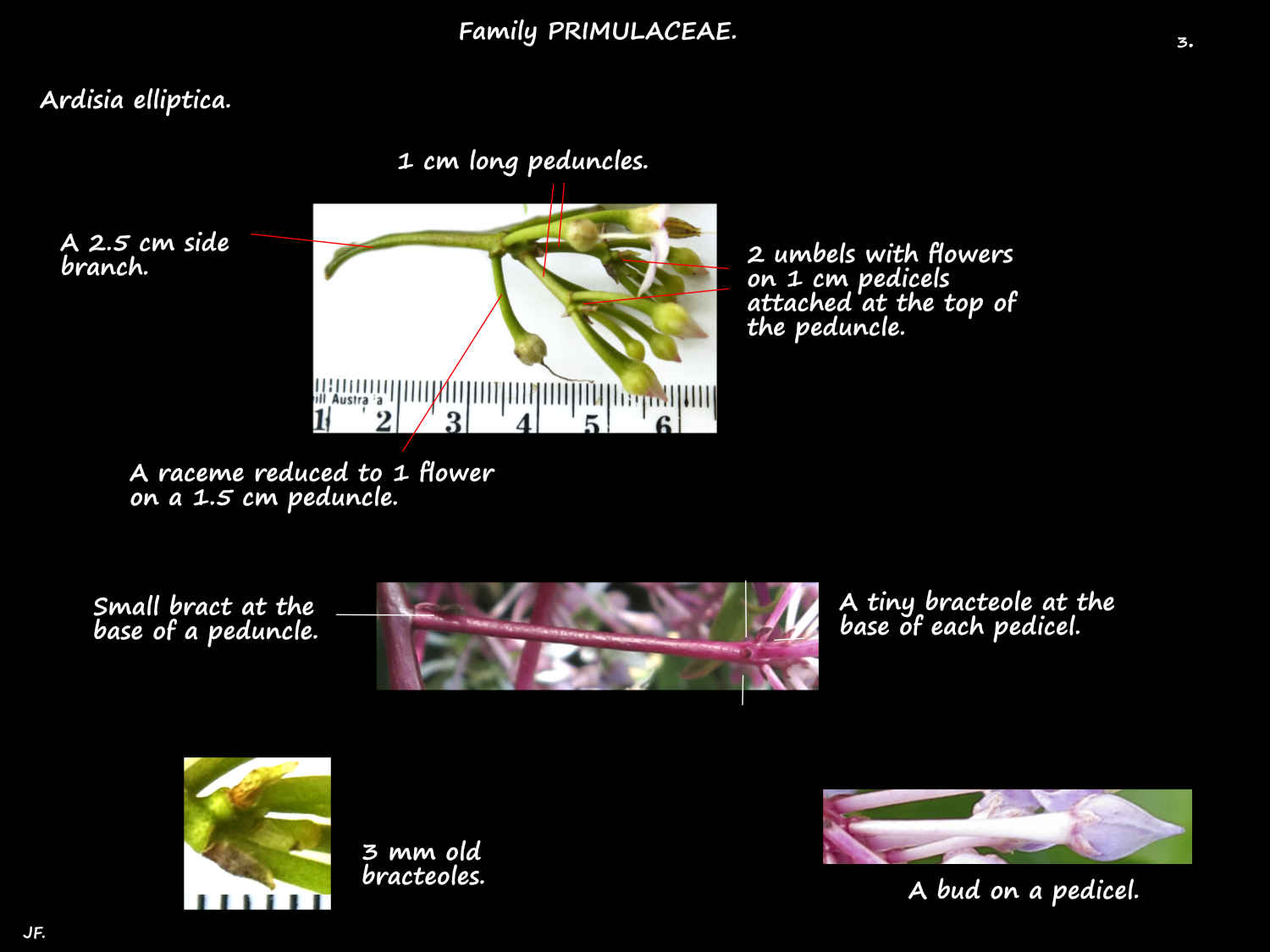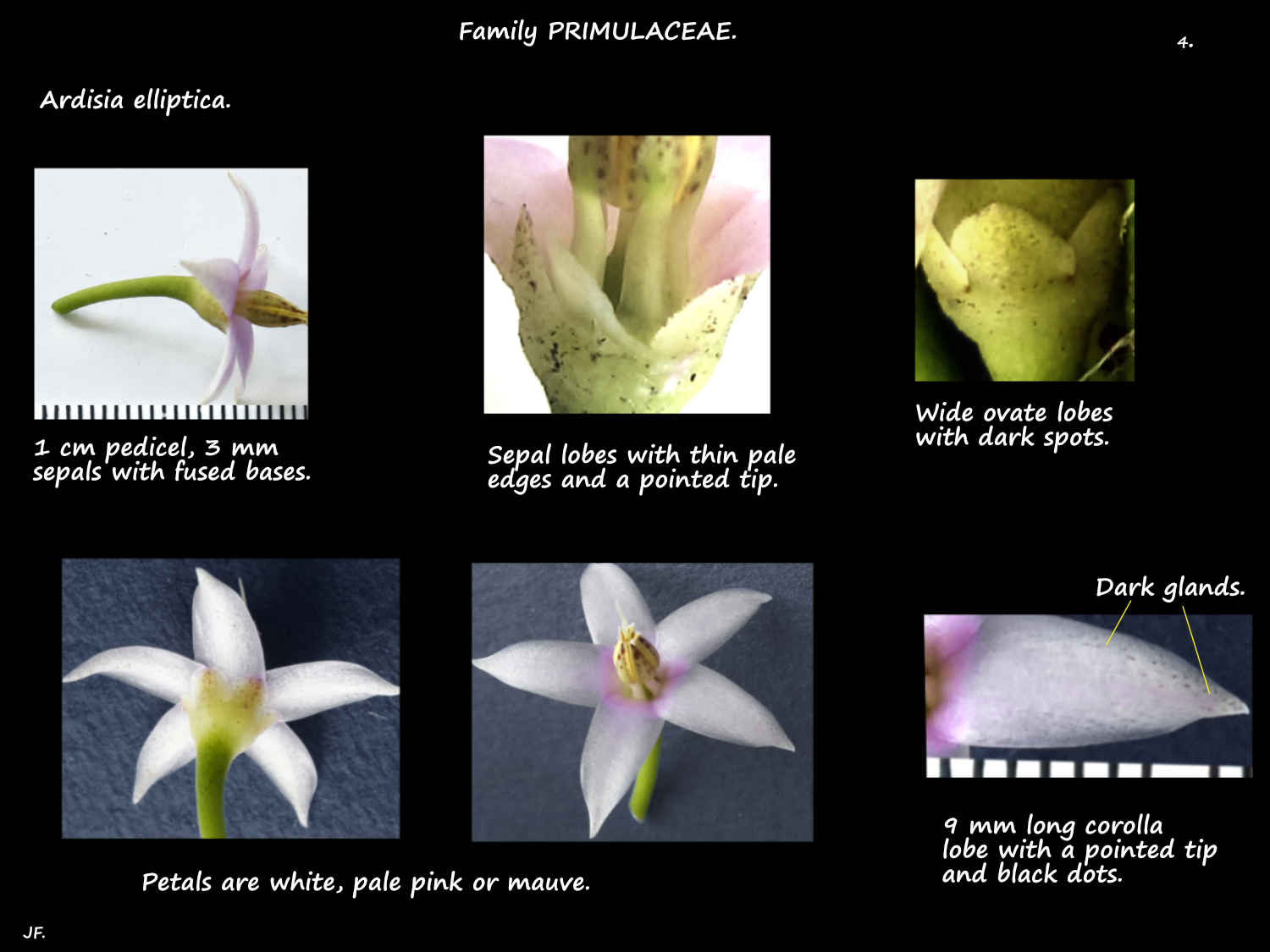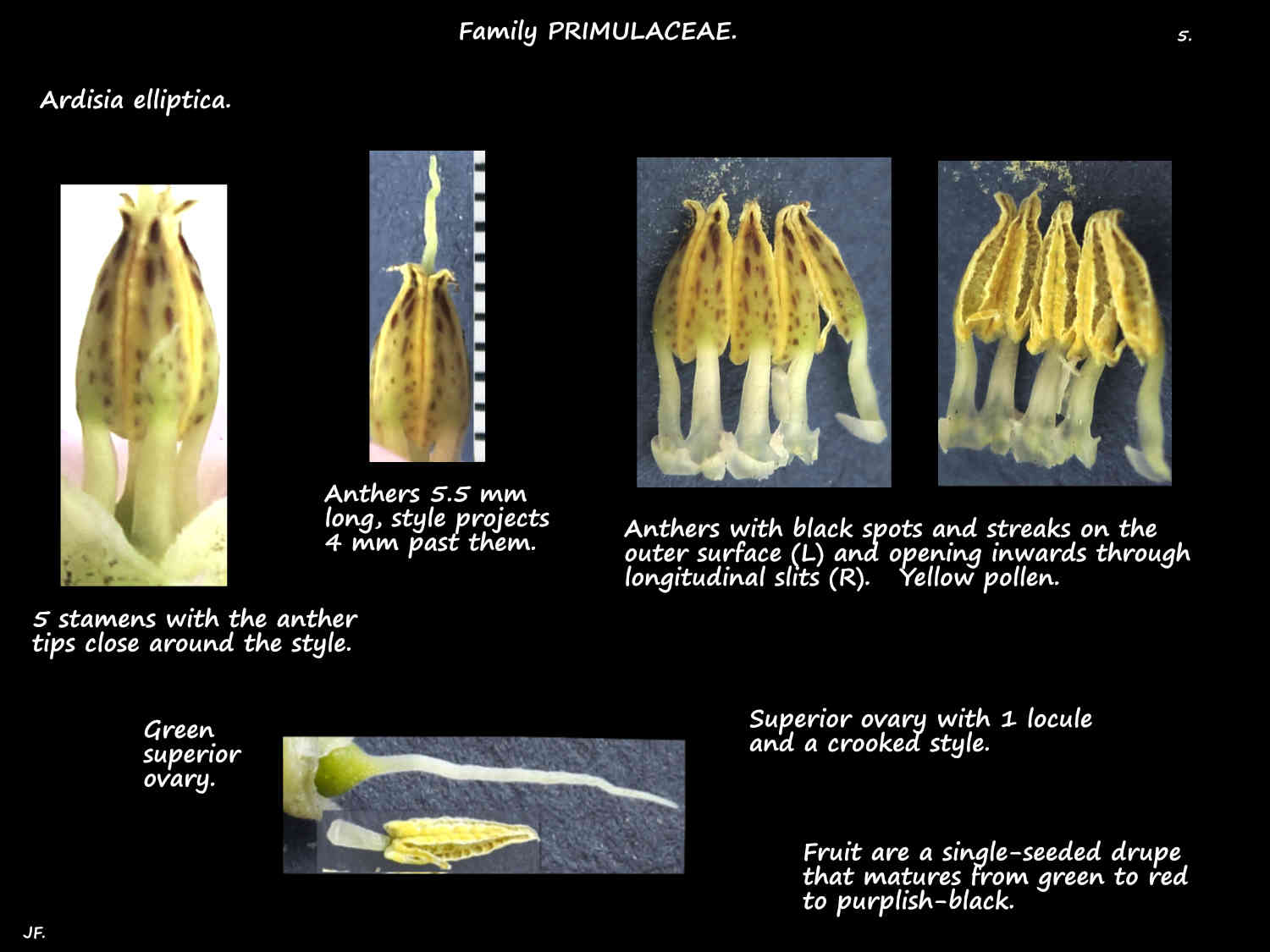Ardisia elliptica.
Shoebutton Ardisia, from S.E. Asia to India and Papua New Guinea is in Family Primulaceae.
Naturalised down the eastern coast of Queensland it is an invasive environmental weed.
It is rarely seen in gardens here.
Seen as shrubs around 1 to 3 m high they can grow to a small 6 m high tree.
They have a single trunk that branches at the top but when pruned they develop multiple trunks with short side branches.
Producing a large amount of seed they can form dense thickets.
Smaller stems are 4-angled.
The alternate leaves are on green to red grooved petioles up to around 2 cm long.
The blade size can vary greatly from 5 to 20 cm long and 2 to 6 cm wide.
Mainly elliptic they can be ovate or oblanceolate.
The edge has no lobes but may sometimes be wavy and there are tiny black dots.
The tips are typically pointed and new growth may be reddish.
Axillary inflorescences are concentrated on short side branches near the ends of the main stems.
The simplest are a raceme with 1 or more flowers along a midrib.
Most have a branched structure with the red side branches up to 8 cm long.
These have a number of peduncles branching off near the end.
Peduncles have a few flowers, on pedicels up to 2 cm long arising from and near the end (umbels).
There are small bracts at the base of the peduncles and pedicels.
The 5 sepals, around 2 mm long are fused at the base.
The wide ovate black dotted lobes have a pointed tip.
The petals are fused at the base with 5 lobes nearly 1 cm long.
The widely flaring pale pink, mauve or white lobes have a pointed tip.
There are orange to black dots on the outer surfaces of the sepals and petals.
The 5 stamens are on filaments that insert onto the corolla tube.
The anthers lie close together with the style extending past them.
Only 1 of the few ovules in the superior ovary develops into a seed.
The fruit are a roughly spherical drupe up to around 1 cm across.
Initially green they mature to bright red then deep blackish purple.
The sepals, and sometimes the style remain on the fruit.
The single 5 mm seed with a hard coat is surrounded by white flesh.
J.F.







